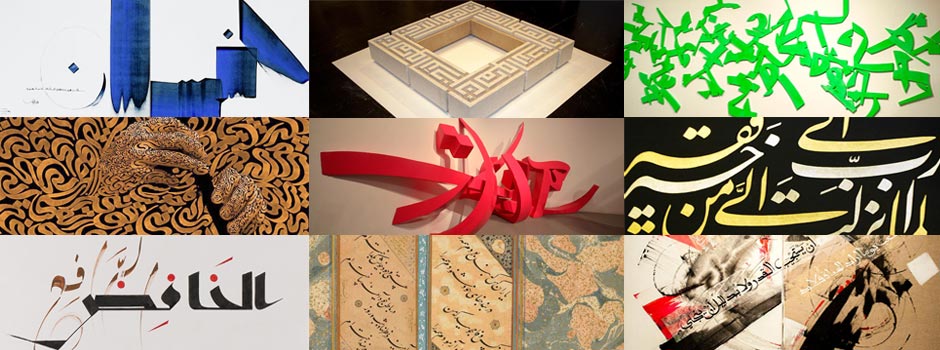
Best of 2014 The Best Calligraphy Exhibitions in 2014
Jan 04, 2015 Calligraphy
During a prolific 200-year period in the 14th–16th centuries, four master calligraphers invented one of the most aesthetically refined forms of Persian culture: nasta‘liq, a type of calligraphy so beautiful that for the first time the expressive form of the words eclipsed their meaning. Each of the four masters featured in the exhibition—Mir Ali from Tabriz (active ca. 1370–1410), Sultan Ali from Mashhad (d. 1520), Mir Ali from Herat (d. 1545) and Mir Imad Hasani from Qazvin (d. 1615)—further evolved the nasta‘liq style, intentionally slanting the script for dramatic effect, modulating lines to balance fluidity and discipline, and adding delicate, twisting flourishes.
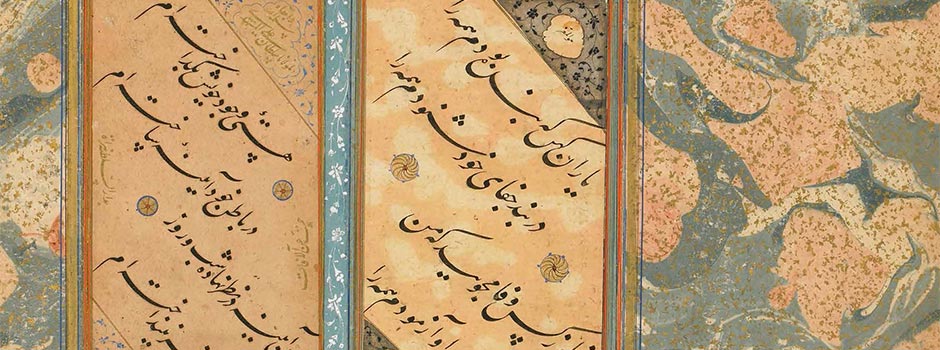 Folio from a Divan by Sultan Husayn Bayqara, attributed to Sultan Ali Mashhadi / Historic Iran, present-day Afghanistan, Herat, Timurid period, ca. 1490. Ink, opaque watercolor, and gold on paper. Purchase: Freer Gallery of Art F1929.66 / Photo courtesy of Smithsonian’s Arthur M. Sackler Gallery
Folio from a Divan by Sultan Husayn Bayqara, attributed to Sultan Ali Mashhadi / Historic Iran, present-day Afghanistan, Herat, Timurid period, ca. 1490. Ink, opaque watercolor, and gold on paper. Purchase: Freer Gallery of Art F1929.66 / Photo courtesy of Smithsonian’s Arthur M. Sackler Gallery
As part of Sharjah Calligraphy Biennial 2014, a solo exhibition by well known Pakistani calligrapher Rasheed Butt was on view at the Calligraphy Area.
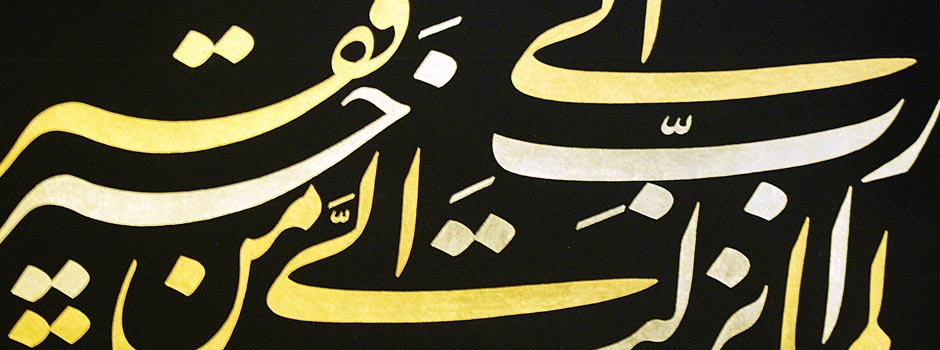 Calligraphy by Rashid Butt / Courtesy of the Artist
Calligraphy by Rashid Butt / Courtesy of the Artist
Massoudy, a living legend, has influenced a young generation working on paper or with light calligraphy and has set a new direction in exploring visual language of calligraphy. While researching the spontaneity of the strokes, Massoudy creates interesting forms and shapes of Arabic letters.
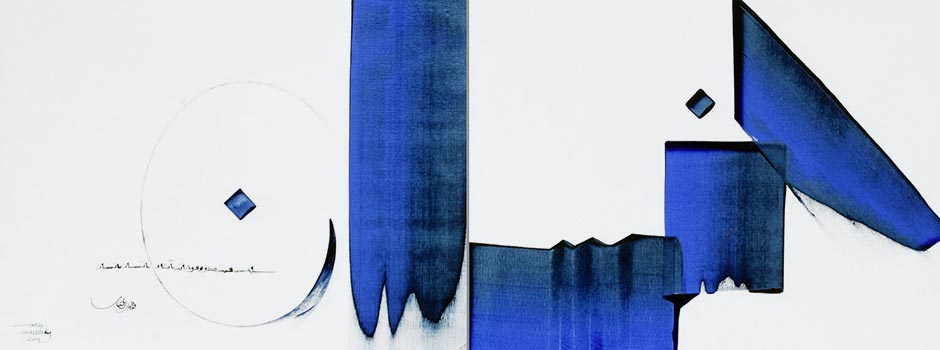 Dyptich, 2009, Pigments and acrylic on canvas, 72x92 cm x 2 / Courtesy of COSMOSWORDS and the Artist
Dyptich, 2009, Pigments and acrylic on canvas, 72x92 cm x 2 / Courtesy of COSMOSWORDS and the Artist
In 'Calligraphical Spaces' El Mestikawy, as a sculptor, uses Arabic letters in a very fluid and flexible way. The letters are often carved as positive and negative form. His artistic career is wrapped with analytical vision of the world around him. The structural form – clear in his artworks – is in line with his architectural sensibility. This is reflected in the modernity of his sculpture. The same letters can be placed in different compositions to create a completely new sculpture. The light and shadow plays an important role in his sculptures.
 Hazem El Mastikawy / I am the Other, 105x105x18 cm / Photo © Islamic Arts Magazine
Hazem El Mastikawy / I am the Other, 105x105x18 cm / Photo © Islamic Arts Magazine
In this article we are presenting an exhibition 'From Contour to Calligraphy' by graphic designer Mehdi Saeedi from Iran. The exhibition is on view at Sharjah Art Museum as part of Sharjah Calligraphy Biennial 2014.
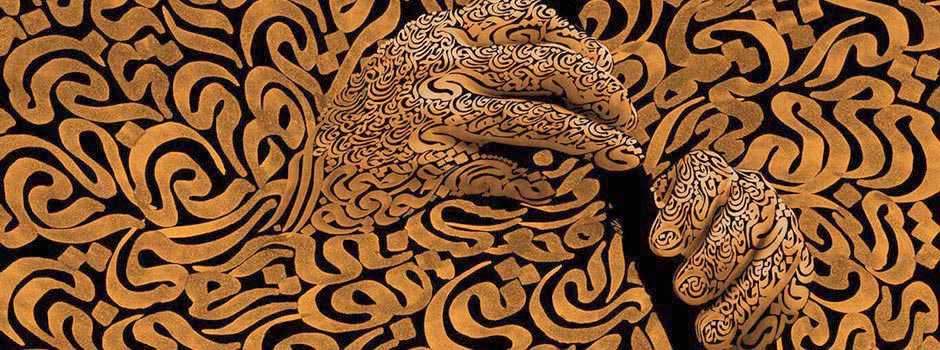 Mehdi Saeedi / Photo © Islamic Arts Magazine
Mehdi Saeedi / Photo © Islamic Arts Magazine
As part of Sharjah Calligraphy Biennial 2014 we were able to see the exhibitions 'Heritage and Acquaintance' by Abdallah Akar from France.
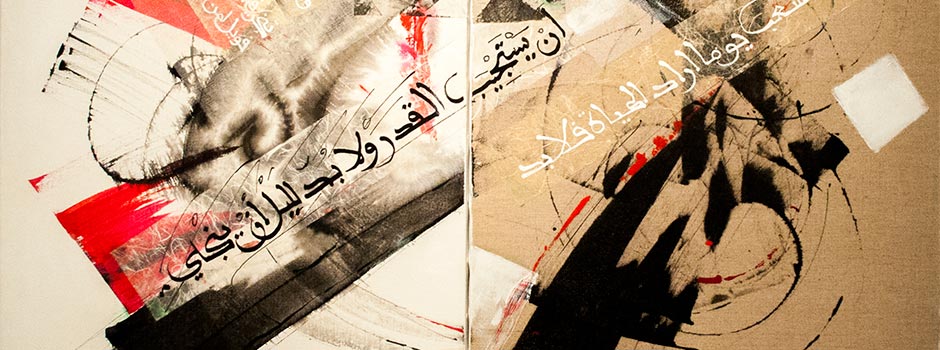 Abdallah Akar / The Will to Live 100x100 cm, from the exhibition 'Heritage & Acquaintance' / Photo © Islamic Arts Magazine
Abdallah Akar / The Will to Live 100x100 cm, from the exhibition 'Heritage & Acquaintance' / Photo © Islamic Arts Magazine
Sabah Arbilli, an Iraqi- British artist currently working and living in Qatar, Doha, known for his painting and sculpture, has had a tremendous impact on Arabic calligraphy-inspired art on the international art scene. A winner of many awards, he explores calligraphy in a new contemporary way. His practice combines a painterly aesthetic with the beauty of Arabic letters.
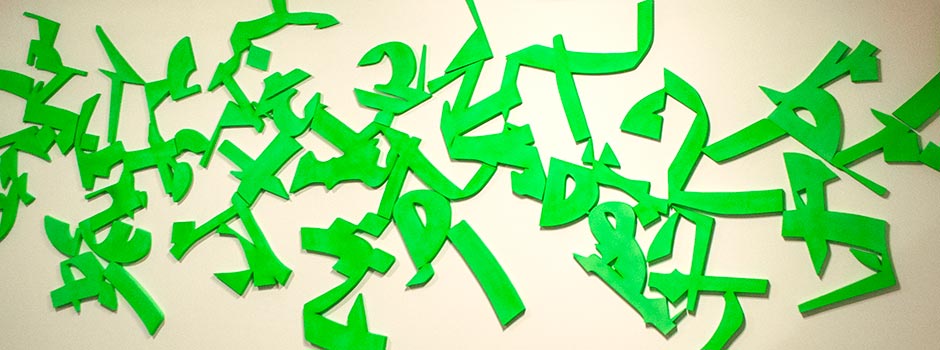 Sabah Arbilli, from the exhibition / Photo © Islamic Arts Magazine
Sabah Arbilli, from the exhibition / Photo © Islamic Arts Magazine
Two globally-acclaimed calligraphers – Samir Al Sayegh and Wang Dongling - come together in 'Strokes In Dialogue', a joint exhibition of Arabic and Chinese calligraphy, uniting the two masters' distinctive practices and styles.
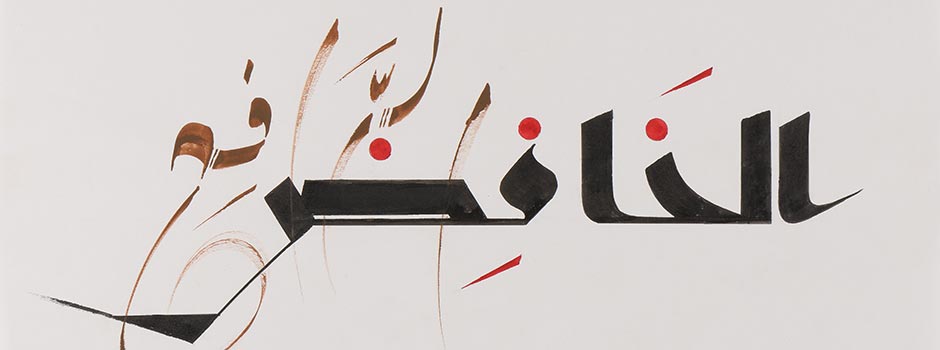 Samir Sayegh / Asmaa Allah Al husna, Ink on paper, 40x60 cm / Courtesy of Athr Gallery
Samir Sayegh / Asmaa Allah Al husna, Ink on paper, 40x60 cm / Courtesy of Athr Gallery
Renowned and recognised for his loud and colourful, larger-than-life spray painting murals, street artist eL Seed utilises traditional Arabic calligraphy and the art of graffiti to express his thoughts, opinions and ideals. Primarily employing large surfaces as his canvas, eL Seed’s‘calligraffiti’ style of illustration takes on a new form, moving away from the two-dimensional and interacting directly with the viewer through monumental 3D sculptures.
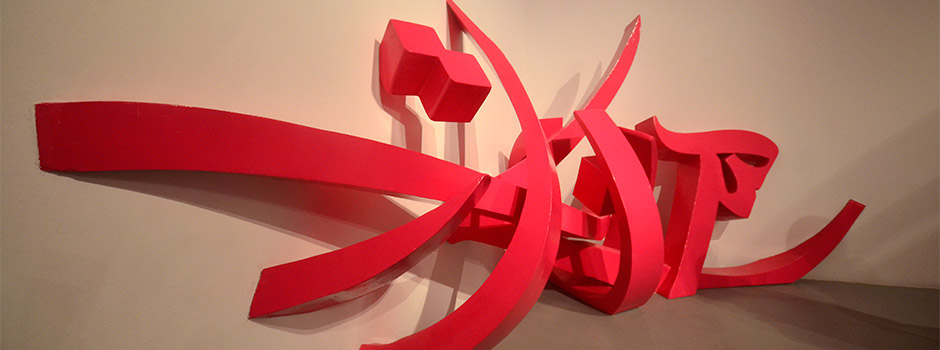 eL Seed, 3D sculptures. From the opening of the exhibition / Courtesy of eL Seed
eL Seed, 3D sculptures. From the opening of the exhibition / Courtesy of eL Seed
Comments
Add a comment